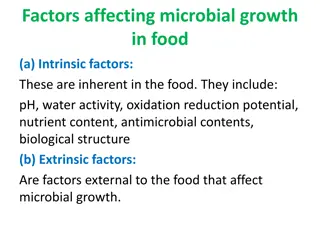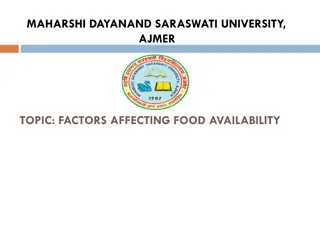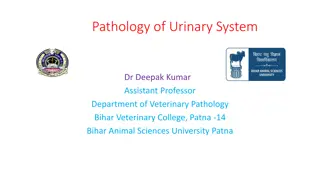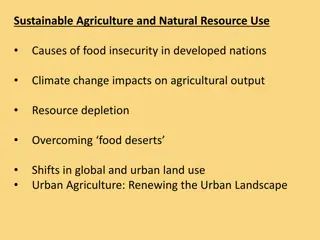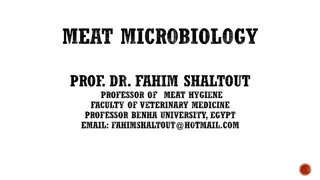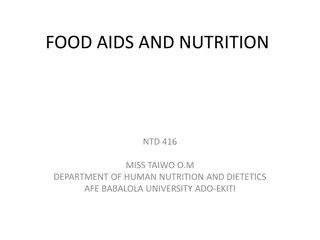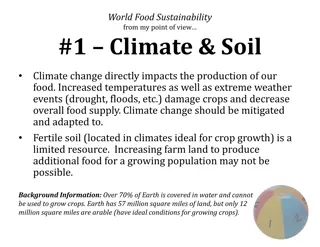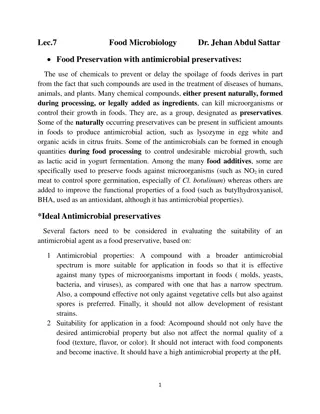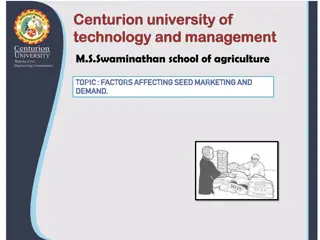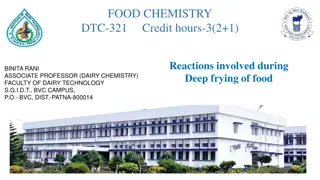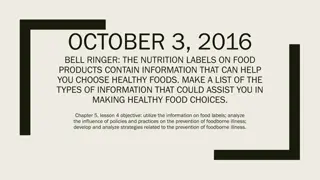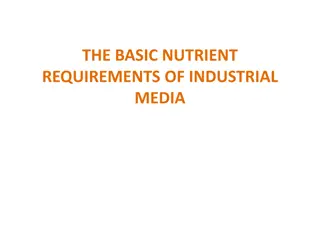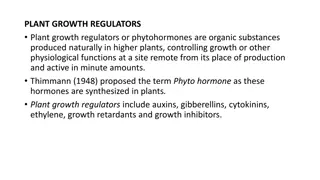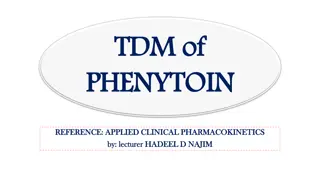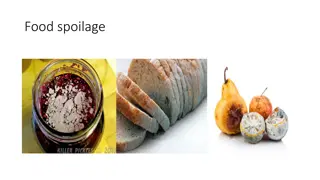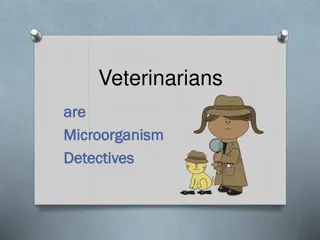Understanding FATTOM: Factors Affecting Microorganism Growth in Food
Discover the acronym FATTOM - Food, Acid, Time, Temperature, Oxygen, Moisture - and how it helps control microorganism growth in food. Explore why these factors are crucial for keeping food safe and learn practical strategies to prevent microbial contamination.
Download Presentation

Please find below an Image/Link to download the presentation.
The content on the website is provided AS IS for your information and personal use only. It may not be sold, licensed, or shared on other websites without obtaining consent from the author. Download presentation by click this link. If you encounter any issues during the download, it is possible that the publisher has removed the file from their server.
E N D
Presentation Transcript
FNS Course 1 Beef - It s What s for Dinner
What is FATTOM? An acronym to help us remember the factors affecting the growth of microorganisms: Yeast Mold Bacteria
Why FATTOM? To keep microorganisms out of our food! To control the growth of existing microorganisms.
FATTOM F is for Food Yeast prefer simple sugars Mold can grow in very poor nutritional conditions Bacteria prefer protein-based foods
FATTOM A is for Acid Bacteria, yeast, and mold grow best in neutral conditions (pH = 7) Molds grow at a lower pH (acidic) than yeasts and bacteria Bacteria will not grow at pH < 4.6
FATTOM T-T is for Time and Temperature Microorganisms need time to reproduce Lower temperatures inhibit reproduction Keep cold foods cold until cooking and hot foods hot once cooked. Do not keep foods in the danger zone for more than a few minutes. Class: What is the danger zone for beef?
FATTOM O is for Oxygen Molds are aerobic Yeasts are facultative anaerobic Bacteria are aerobic, anaerobic, and facultative Class: Is controlling oxygen levels a good way to control bacteria?
FATTOM M is for moisture All microorganisms need moisture to grow & reproduce


